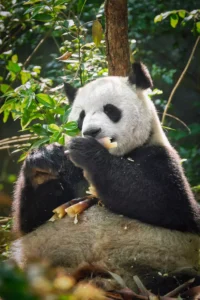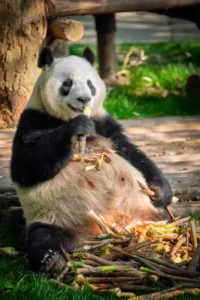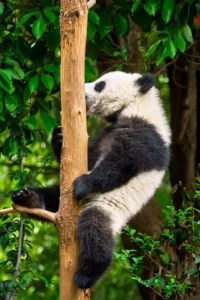A Comprehensive Guide
The giant panda, an iconic symbol of China and a beloved creature worldwide, has a diet that often surprises many. While their appearance suggests carnivorous tendencies, these gentle giants primarily consume bamboo. In this article, we'll delve deep into the dietary habits of pandas, exploring their primary food sources, occasional treats, and the nutritional needs that drive their choices.
Key Takeaways:
- Pandas primarily consume bamboo, making up to 99% of their diet.
- They occasionally eat small animals and birds.
- Bamboo provides pandas with essential nutrients but also has its limitations.
- Pandas have a unique digestive system adapted to their bamboo-centric diet.
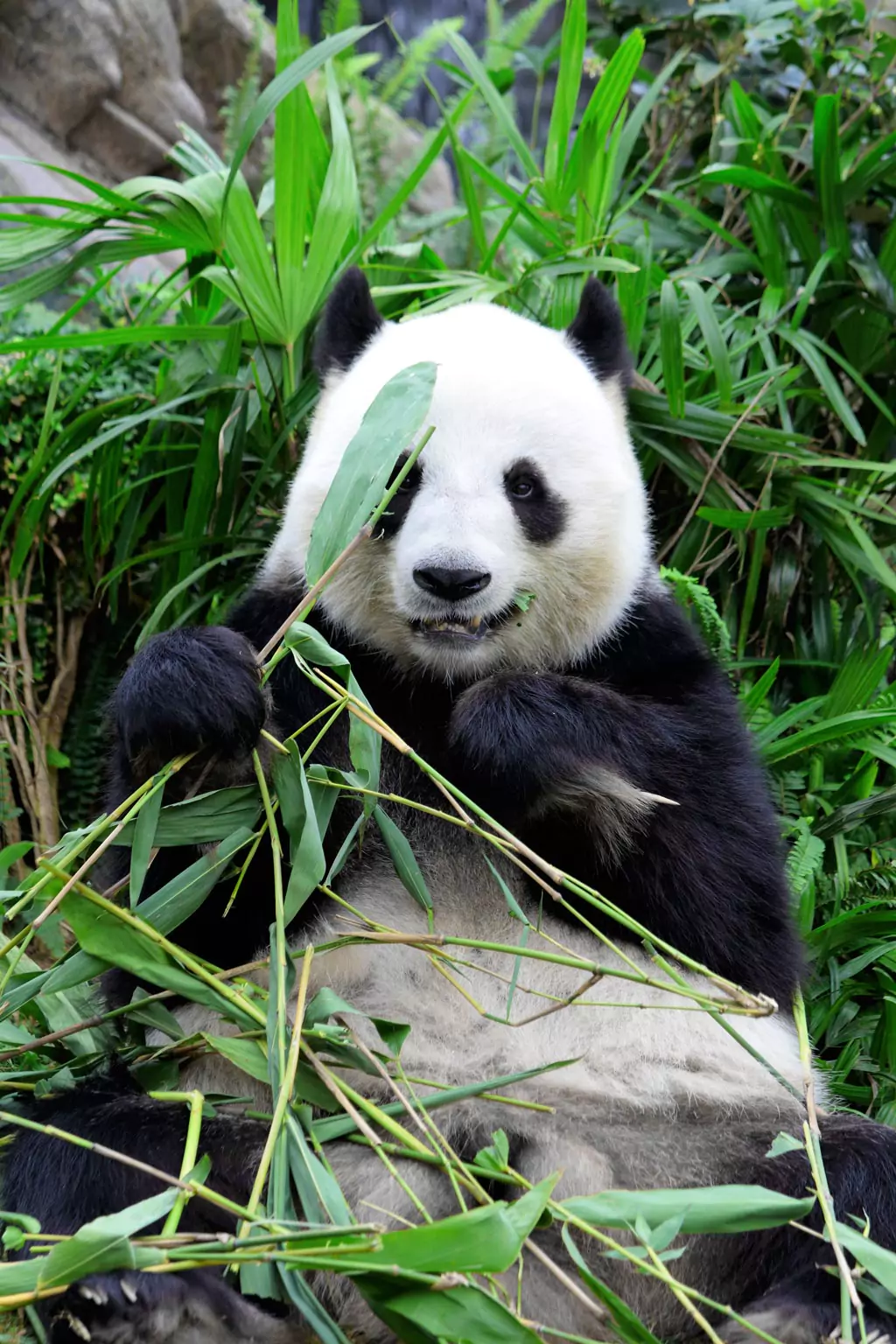
Bamboo: The Staple Diet of Pandas
Bamboo Species and Preferences
Pandas are not particularly picky when it comes to bamboo species. Out of the many species available, they have been observed to consume at least 25 different types. However, they do exhibit preferences based on the region they inhabit. For instance, in the Qinling Mountains, pandas prefer the arrow bamboo, while those in the Sichuan region often opt for the black bamboo.
[[img alt="Different bamboo species"]]
Nutritional Value of Bamboo
Despite being their primary food source, bamboo doesn't offer a lot in terms of nutritional value. It's low in calories and lacks certain essential nutrients. However, pandas have evolved to extract maximum nutrition from it. The bamboo shoots, which are tender and contain more water, are particularly favored during certain seasons.
Challenges with a Bamboo-Centric Diet
Bamboo, while being the primary food source, poses certain challenges. It occasionally flowers all at once and then dies off, leading to a scarcity. During these times, pandas might have to travel long distances in search of food. Moreover, the low caloric content means pandas have to consume large quantities daily to meet their energy needs.
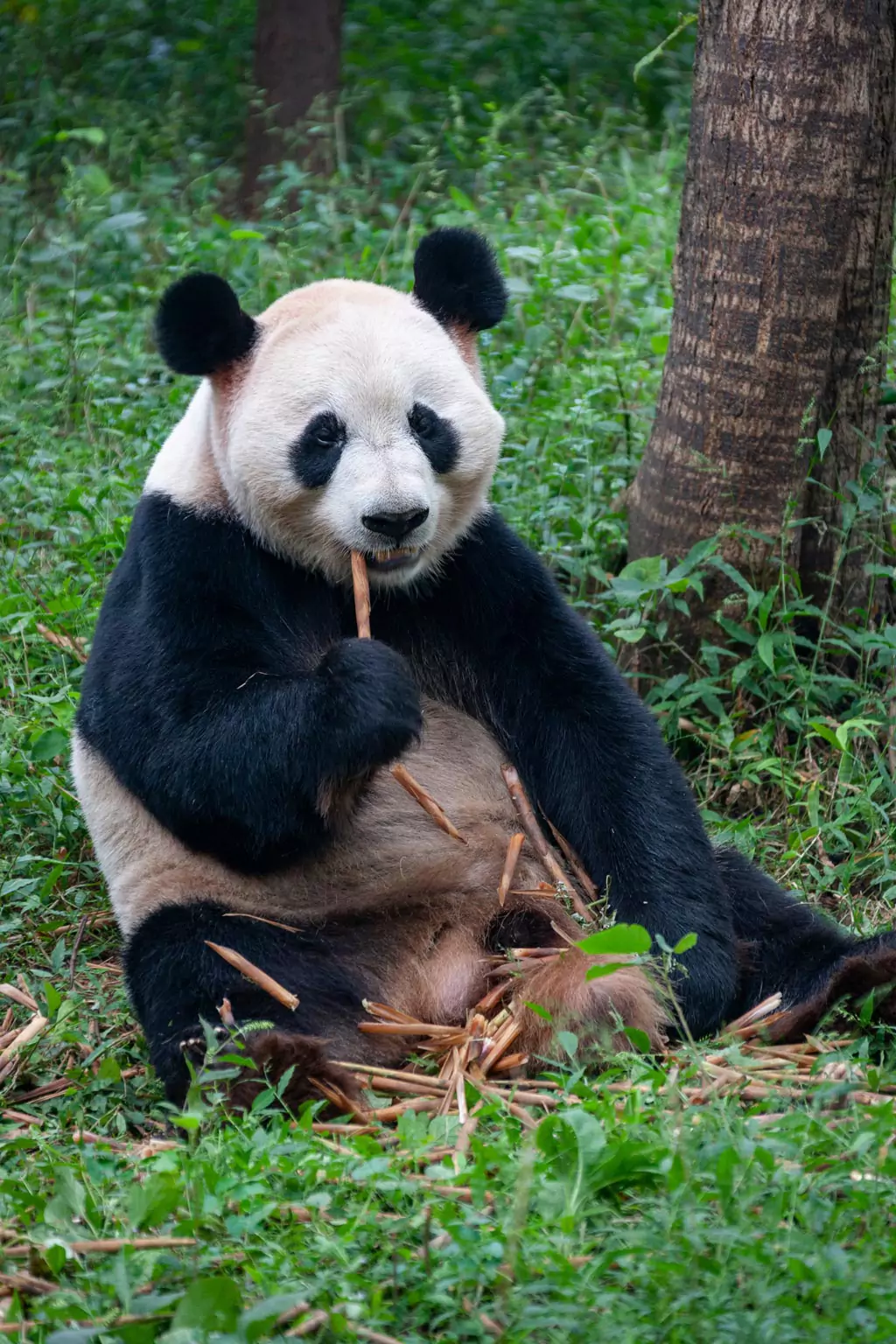
Beyond Bamboo: Other Foods in a Panda's Diet
While bamboo dominates their diet, pandas do consume other foods occasionally. This includes small animals, birds, and even fish. These instances are rare and often driven by availability and opportunity rather than preference.
Small Animals and Birds
In the wild, pandas have been observed hunting for pikas, rodents, and small birds. This behavior is more common among young pandas, possibly due to their higher energy requirements. However, it's worth noting that such instances are rare, and meat constitutes a tiny fraction of their overall diet.
Eggs and Insects
Pandas have also been observed consuming eggs, especially when they come across unattended nests. Insects, particularly in their larval stage, can also be a treat for these creatures.
The Unique Digestive System of Pandas
Pandas have a carnivore's digestive system, which is quite fascinating given their primarily herbivorous diet. Their gut is short and lacks certain enzymes that would help break down cellulose from plants efficiently. However, they have a muscular esophagus, allowing them to consume large bamboo chunks. Their stomach lining is also thick and tough, protecting them from bamboo splinters.
Microbial Help
The panda's gut houses specific microbes that assist in breaking down cellulose, turning it into usable energy. This microbial community is crucial for pandas, allowing them to extract maximum nutrition from bamboo.
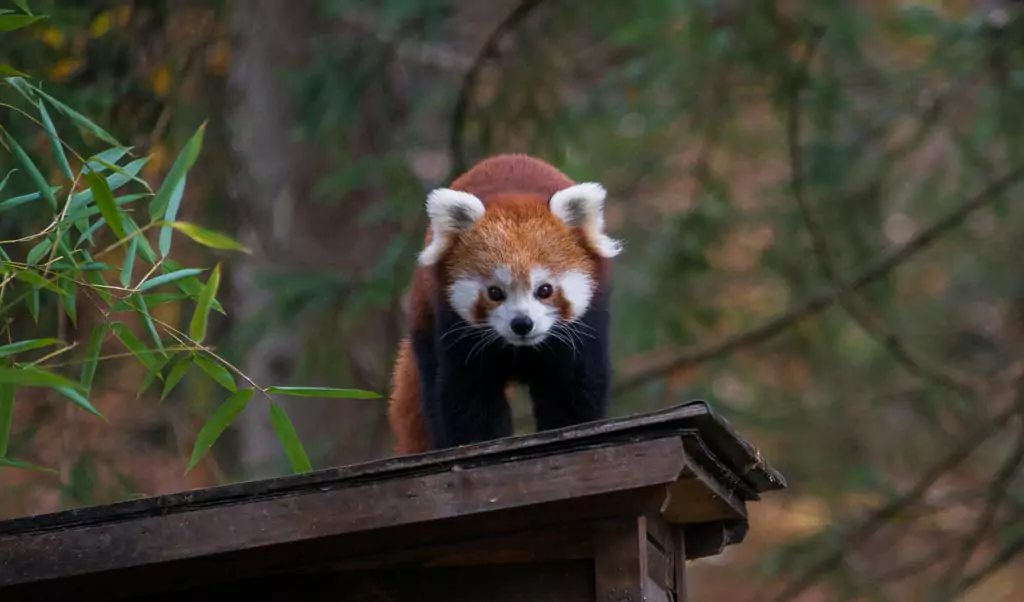
Adaptations Over Time
Over millennia, pandas have undergone several adaptations to accommodate their bamboo-centric diet. Their strong jaws and unique "pseudo-thumb" allow them to grasp and crush bamboo efficiently. Their teeth are broad and flat, suitable for grinding bamboo fibers.
Seasonal Variations in Diet
Pandas' dietary habits also vary with seasons. During spring and summer, they prefer the tender bamboo shoots. In contrast, in the colder months, they opt for bamboo leaves and stems, which are more fibrous and less nutritious.
The Role of Bamboo in Panda Conservation
Bamboo forests play a crucial role in panda conservation. These forests are not only the primary habitat for pandas but also serve as their primary food source. The health and proliferation of bamboo forests directly impact the survival and well-being of the panda population.
Bamboo Forests and Panda Habitats
Pandas are native to several provinces in China, with the majority of them residing in Sichuan. These regions are characterized by vast bamboo forests, which provide both shelter and sustenance to the pandas. The dense undergrowth offers protection from predators, while the bamboo shoots and leaves cater to their dietary needs.

Conservation Efforts and Bamboo Reforestation
Given the significance of bamboo in the lives of pandas, conservation efforts often focus on bamboo reforestation. By ensuring a steady supply of bamboo, these efforts aim to provide a sustainable habitat for pandas, increasing their chances of survival in the wild.
Pandas in Captivity: Dietary Adjustments
Pandas in captivity often have a slightly varied diet compared to their wild counterparts. While bamboo remains a staple, they are also provided with specially formulated biscuits, fruits, eggs, and occasionally fish or poultry.
Nutritional Supplements in Captivity
Given the limited nutritional value of bamboo, pandas in captivity are often provided with supplements to ensure they receive all the necessary nutrients. These supplements are carefully formulated to mimic the nutritional profile of their natural diet.
Frequently Asked Questions
1. Why do pandas eat bamboo when they have a carnivorous digestive system?
While pandas have a digestive system typical of carnivores, they have evolved to rely primarily on bamboo. This shift in diet is believed to be due to a combination of factors, including competition for prey and the abundance of bamboo in their natural habitat.
2. How much bamboo does a panda consume in a day?
An adult panda can consume between 26 to 84 pounds of bamboo daily, depending on the type and part of bamboo they are eating.
3. Do pandas drink water?
Yes, pandas do drink water. They source their water from streams and rivers in their habitat. In captivity, they are provided with a regular supply of fresh water.
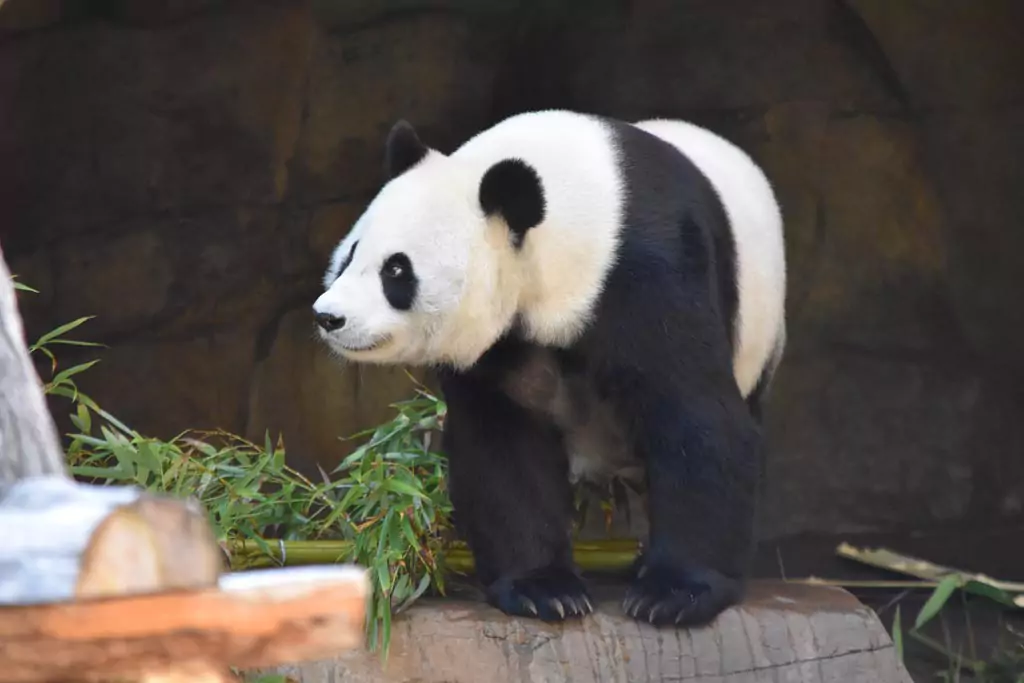
The Global Fascination with Pandas
Pandas, with their adorable appearance and gentle demeanor, have captured the hearts of people worldwide. Their unique dietary habits, combined with their playful nature, make them a subject of intrigue and fascination.

